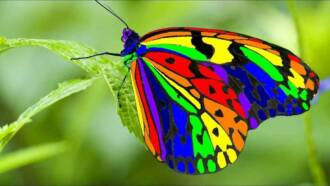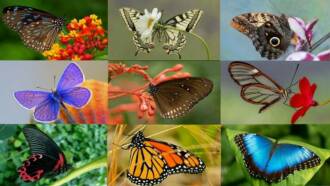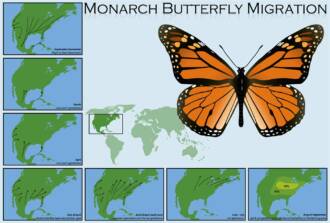
Butterflies are colorful and delicate insects that attract attention with their beauty and elegant flight. But besides this, they also have amazing properties and features that few people know about. In this article, we will tell you about 6 amazing facts about butterflies that you may not know.
1. Butterflies perceive the world through smells. Butterflies have a very developed olfactory apparatus, which allows them to sense odors over long distances. They use their antennae to pick up scents from their environment and determine where food or a breeding partner is.
2. Butterflies can fly great distances. Some species of butterflies can migrate over distances of up to several thousand kilometers. For example, monarch butterflies migrate from Canada and the United States to Mexico every year to escape the cold winter. This is one of the most amazing journeys in the world of insects.
3. Butterflies can see colors that are invisible to the human eye. Butterflies have special cells called photoreceptors that allow them to see a wide range of colors, including ultraviolet colors. This allows them to detect and identify flowers that are invisible to us.
4. Butterflies can only live for a few weeks. Most butterflies live only a few weeks, but during that time they go through an incredible transformation. The egg hatches into a hungry caterpillar, which gradually turns into a pupa. After this, a beautiful butterfly flies out of the pupa, ready for its short but bright existence.
5. Butterflies play an important role in dust pollination of plants. Butterflies are one of the main pollinators of plants, especially flowering plants. While visiting a flower, the butterfly transfers pollen from one flower to another, promoting pollination and plant reproduction. Without the participation of butterflies, many plant species would not be able to reproduce.
6. Butterflies can be a signal about the state of the environment. Changes in butterfly abundance and diversity can serve as an indicator of environmental change. If the number of butterflies decreases, this may indicate an unfavorable state of the ecosystem and the impact of anthropogenic factors.
Amazing Facts About Butterflies You May Not Know
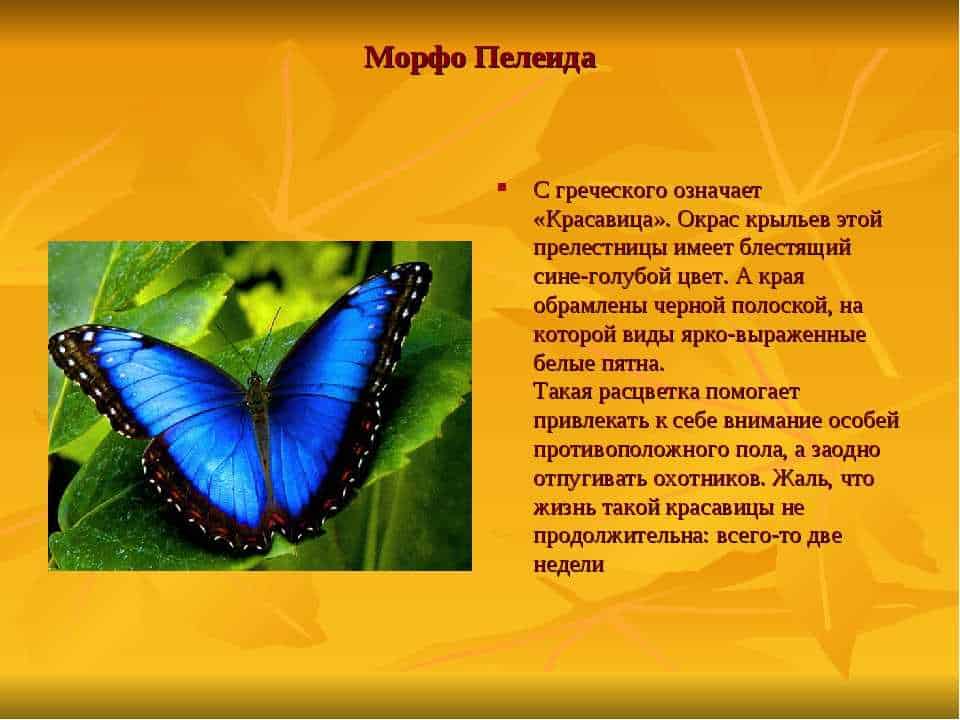
1. Butterflies can see more colors than people.
Butterflies have a special ability to see ultraviolet light, which is inaccessible to the human eye. This allows them to see more colors and shades than we do. Some butterfly species, such as the emperor moth, are able to detect even subtle changes in the color spectrum, which helps them navigate their environment and find food.
2. Butterflies can cover vast distances during migration.
Some butterfly species make amazing migrations over vast distances every year. For example, monarch butterflies fly from North America to Mexico, covering up to 4 thousand kilometers. Despite their tenderness and apparent fragility, butterflies are able to overcome such long journeys due to their lightness and efficient use of wind during flight.
3. Butterflies can feed on more than just flower nectar.
Although most butterflies feed on flower nectar, some species have an unusual diet. For example, the mouth-bearing butterfly feeds on the tears of animals, while the pupa butterfly feeds on the blood of other insects. There are also species of butterflies that feed on fruits, rotten vegetables or even rotten meat.
4. Butterflies have a protective paint coating.
Many species of butterflies have bright and colorful colors, which serve as protection from predators. However, not all brightly colored butterflies are poisonous. Some species imitate poisonous butterflies to ward off predators. In addition, some species of butterflies have special cryptic colors that allow them to blend into their environment and be invisible to predators.
5. Butterflies can live from several days to several months.
The average lifespan of butterflies varies from a few days to several months, depending on the species. Some species, such as moths, live only a few days, while others, such as monarchs, can live up to 9 months. Feeding and environmental conditions play a role in the lifespan of butterflies.
6. Butterflies are able to navigate using the Earth's magnetic field.
Butterflies have the ability to navigate in space using the Earth's magnetic field. Research has shown that butterflies use magnetic fields to determine their location and navigate during migrations. This amazing phenomenon is still not fully understood, but it shows how complex and amazing the abilities of these small creatures are.
Incredible variety of species
Butterflies are one of the most diverse groups of insects on Earth. Their species diversity is amazing. Today, more than 18,000 species of butterflies are known, and researchers continue to discover new ones.
Butterflies differ not only in appearance, but also in size. They can be tiny, just a few millimeters in length, or, conversely, have wings stretching up to 30 cm. In addition, butterflies have a variety of shapes and colors of wings - from bright and colorful to delicate and inconspicuous.
It is important to note that butterflies live in different ecosystems, ranging from tropical forests and deserts to fields and gardens. They are adapted to various environmental conditions and play an important role in the planet's biological diversity.
Some butterfly species are known for their long-distance migrations. For example, monarch butterflies travel thousands of kilometers each year to reach their breeding grounds. This phenomenon is admired and studied by scientists.
Overall, the diversity of butterfly species is an amazing manifestation of nature. Studying their diversity and adaptation to their environment helps us better understand the environment itself, as well as the importance of preserving and protecting the planet's biological diversity.
Amazing transformation
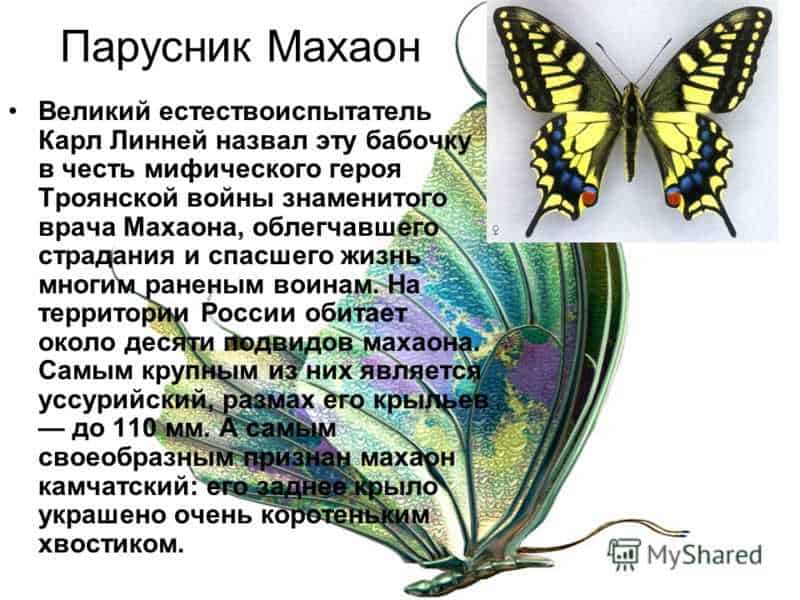
The transformation of butterflies is one of the most amazing and unique phenomena in the natural world. The entire process of transformation from a caterpillar to a butterfly is called metamorphosis. This amazing transformation occurs through complex physiological and biological processes.
At first, the caterpillar builds a cocoon or scaly blanket for itself, which serves as a shelter and protects it from external influences. Inside the cocoon, incredible changes occur - the caterpillar turns into a chrysalis. The chrysalis looks like a motionless and shapeless mass, but inside, all the organs and tissues grow and transform.
This process lasts several weeks or months, depending on the species of butterfly. When the transformation is complete, the pupa splits open and the adult butterfly emerges. A newborn butterfly often remains in place until its wings dry out and become stronger.
Amazingly, some butterfly species can metamorphose multiple times during their lifetime. For example, monarchs undergo two metamorphoses — first in a cocoon and then in a chrysalis — before emerging as an adult butterfly. This phenomenon is called heterometabolism.
Unique vision

Butterflies have amazing vision that is different from the visual abilities of other insects. They are able to perceive colors and shapes with incredible accuracy and clarity.
One of the features of butterfly vision is the ability to perceive ultraviolet light. They have special photochemical receptors that allow them to see ultraviolet rays. This allows them to detect color shades that are invisible to us.
Butterflies also have a wide field of view that covers almost 360 degrees. This allows them to detect danger and avoid predators that may be waiting for them from all sides.
Interestingly, some species of butterflies can distinguish between the polarization of light. This allows them to use sunlight as a navigation tool and navigate space.
It is also worth noting that butterflies can see movement at high speed. They have a high frame refresh rate, which allows them to notice and respond to the smallest changes in the environment.
Phenomenal ability to travel

Butterflies have the amazing ability to travel vast distances, overcoming obstacles and habitat continuity. They are able to travel tens and even hundreds of kilometers in search of food, better conditions for reproduction, or for relocation to new territories.
One amazing example of such travel is the migration of monarch butterflies. Every fall they embark on an incredible journey from Canada and the United States to Mexico, covering a distance of up to 4,000 kilometers. Moreover, these butterflies fly in huge flocks consisting of millions of individuals and make this journey over several months.
But how are butterflies able to travel such vast distances? They use a variety of strategies, such as using wind currents, navigating by the sun and stars, and remembering the landscape and geographic features along their path. In addition, butterflies can use electromagnetic fields for navigation and orientation.
Implications for the Ecosystem
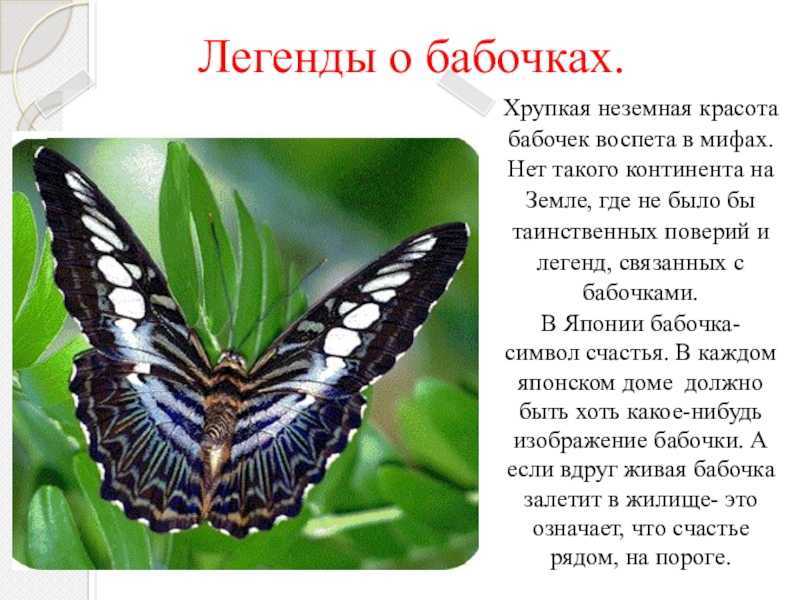
Butterflies play an important role in the ecosystem, performing various functions that influence biodiversity and natural resource restoration.
Plant pollinators: Butterflies are important plant pollinators. They transfer pollen from one flower to another, facilitating the pollination process and allowing plants to reproduce. Thanks to this, butterflies help maintain soil fertility and maintain the diversity of the plant world.
Food chain: Butterflies are important links in the food chain. Butterfly larvae provide food for many animals, including birds, lizards, frogs and insects. In turn, adult butterflies serve as a food source for birds and other predators, thus maintaining balance in the food chain and ensuring the survival of other species.
Ecological status indicators: Butterflies can serve as indicators of ecological status. Their presence or absence in a particular area can indicate the quality of the environment. For example, if there is a decline in butterfly numbers in a certain area, this could indicate air pollution or pesticide use, which could be harmful to other living organisms, including humans.
Ecotourism: Butterflies are also of significant importance to ecotourism. Many people are interested in studying and observing butterflies, which contributes to the tourism industry and job creation. It also helps conserve and protect habitats for butterflies and other animal species.
Butterflies and symbolism

Butterflies have long been associated with various symbols and representations in various cultures around the world. Their graceful wings and transformation from caterpillar to beautiful butterfly make them a metaphor for different concepts and ideas.
1. Symbol of freedom and transformation
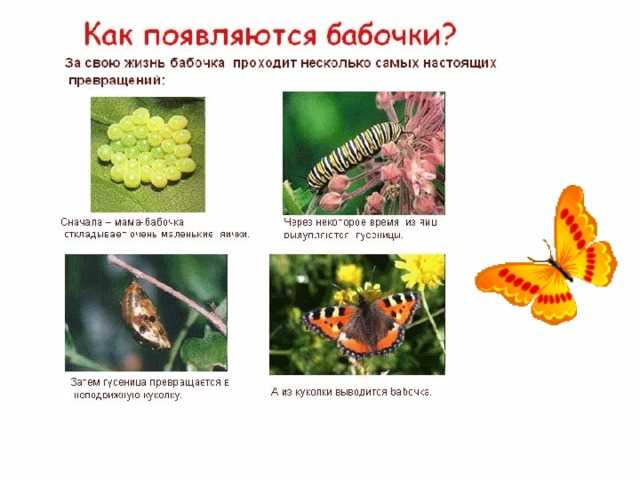
The butterfly is a symbol of freedom and transformation. Their ability to overcome obstacles and transform from a rough caterpillar to a graceful butterfly is associated with the idea of personal growth and change. The butterfly also symbolizes liberation from limitations and ascent to heights.
2. Symbol of beauty and elegance
Butterfly wings are often considered to be some of nature's most beautiful and elegant creatures. Their varied colors and patterns make them attractive and impressive. Butterflies symbolize beauty, grace and grace, and serve as inspiration for art and design.
3. Symbol of change and fickleness
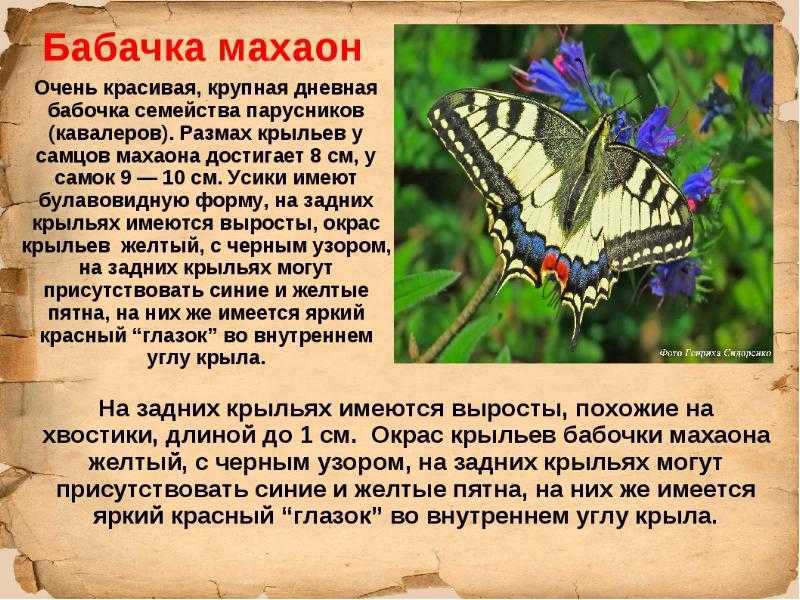
Butterflies are known for their changeability and ability to quickly move from one place to another. They also symbolize change and impermanence as their life cycle is short and they can easily change their image and surroundings. Butterflies remind us of the importance of adaptability and willingness to change.
4. Symbol of soul and spirituality

In some cultures, the butterfly is associated with the soul and spirituality. Her transformation from a crude caterpillar to a beautiful butterfly is seen as a symbol of resurrection and rebirth. The butterfly is also considered a link between the earthly and heavenly worlds, and its appearance can be interpreted as a sign of supernatural forces and influences.
5. Symbol of lightness and joy
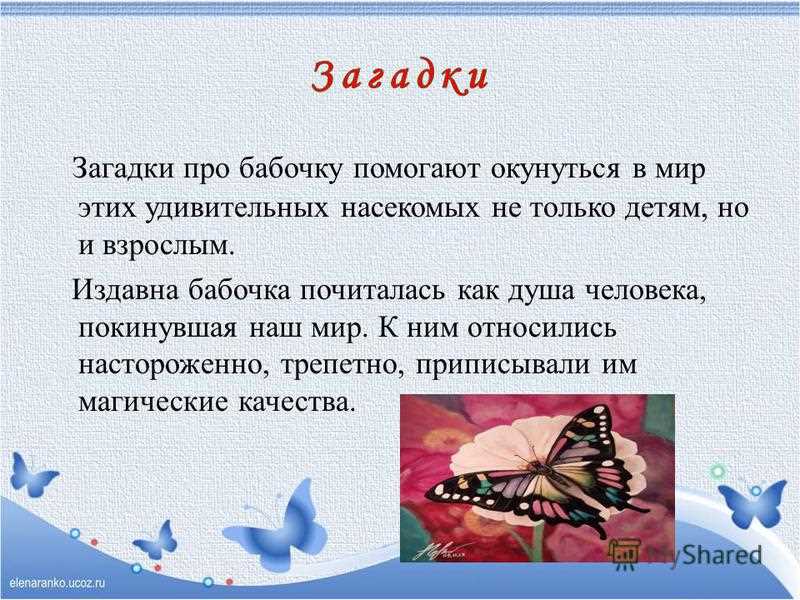
Butterflies are associated with lightness, joy and playfulness. Their light and graceful movement in the air and bright colors fill people with positive emotions. Butterflies symbolize the joy of life and bring a feeling of lightness and carefreeness.
6. Symbol of rebirth and new beginning
In some cultures, the butterfly is seen as a symbol of rebirth and a new beginning. Their ability to transform and emerge from the cocoon is associated with the idea of reboot and rebirth. A butterfly can serve as a reminder of new opportunities and chances that may arise after difficult times.

